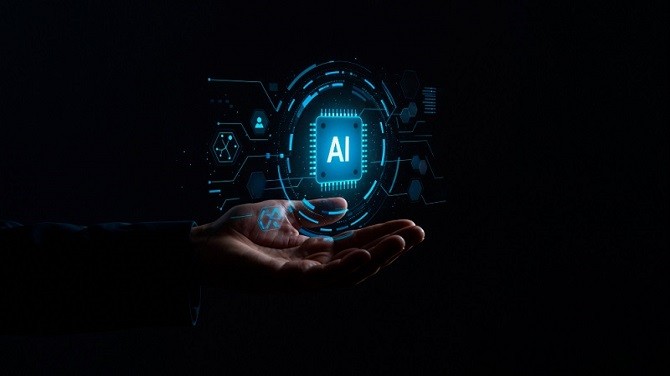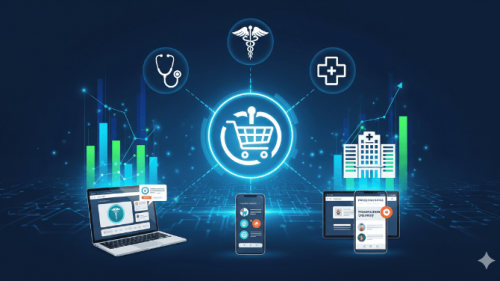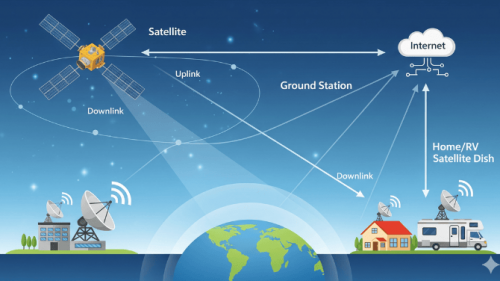A few years ago, "Artificial Intelligence" was the kind of phrase you used to hear in science fiction films or read about in technical headlines about far-flung successes.
By 2025, fast forward, and AI is not a dream of some distant future- it is cool (and sometimes loud) to run your daily life. Whether you’re asking your phone’s voice assistant for the weather, getting Netflix recommendations you swear are eerily accurate, or reading news written by… well, possibly AI, technology is everywhere.
Machine learning, a cousin close to AI, is the one that gives these systems their smarts. It is not about telling a computer what to do step by step; This is about teaching it a pattern so that it can find out things on its own. And the pace of change right now? Honestly, it’s dizzying. Let’s break it down so you can see not just what AI and machine learning are doing in 2025, but also where it’s all headed - and how you can get involved.
What is Artificial Intelligence?
The AI is more about the building system that can process large amounts of data, learn, and then decide.
For example, when you type a search query in Google and it shows you what you were seeing (and maybe the things you know that you wanted), AI is working behind the curtain. It’s there when banks flag suspicious credit card transactions. It’s there when cars decide to brake before you even spot a hazard.
In short, AI is not one single technology. It’s a collection of techniques - from natural language processing to computer vision - all aimed at making software think.
What is AI Development?
AI development is the process of designing, training, and deploying these intelligent systems. It’s not just coding - it’s about choosing the right algorithms, feeding them the right data, and constantly fine-tuning their “brains.”
In 2025, AI development will be more accessible than being a special playground for PhD and huge technology companies. Tools like Tensorflow, Pytorch, and the API of OpenAI have made it possible for startups and even single developers to make powerful AI-driven products without making everything from scratch.
But make no mistake - AI development isn’t just plug-and-play. The magic is in the data. You can have the most advanced algorithm in the world, but if your training data is biased, outdated, or incomplete, the results will be worse than useless. That’s why modern AI developers are as much “data wranglers” as they are programmers.
Latest Trends in Artificial Intelligence
2025 has brought some game-changing AI trends that are difficult to ignore:
AI Agent: These are not just chatbots; They are digital workers who can carry out complex, multi-step tasks without constant human supervision.
Georarium AI Everywhere: Tools such as ChatGPT, Midjourney, and others have developed not only to create lessons or drawings, but also entire websites, product design, and even commercial plans.
Edge AI: AI model processing on equipment instead of sending everything to the cloud. This rapidly depends on AI, more private and less on internet connection, huge for industries.
AI Development Process
If you have ever wondered how the AI system comes into life, then there is a simplified roadmap here:
Definition of Problem - What are you trying to solve, really? Vague goals lead to vague results.
Data Collection & Cleaning - This is where most of the work happens. Good AI depends on great data.
Model Selection - Choosing the right algorithm or neural network architecture.
Training - Feeding the data to the model so that it can learn the pattern.
Testing and Verification - ensuring that it works not only on old data, but also on new, unseen data.
Integrate the Priest - AI with real-world products or services.
Monitoring & Updating - AI isn’t “set it and forget it.” It needs ongoing maintenance.
Developing AI is more like raising a child than building a machine - it grows, adapts, and sometimes surprises you.
Challenges in AI
AI isn’t perfect - far from it. The challenges in 2025 are both technical and ethical.
Prejudice in data - AI can achieve prejudices from humans who have created their training data.
Balancing innovation with the protection of data privacy and user information is a continuous tug-of-war.
High cost - Training large models can cost millions in computing resources.
Lack of talent - skilled AI developers are in high demand and low supply.
Regulatory obstacles - Governments are hitting a foot to maintain, introducing laws that can help in innovation and obstruct innovation.
AI’s future depends on addressing these head-on.
How to Get Started with AI Development?
If you are itching to jump, then there is a realistic starting point here:
Learn the Basics - get acquainted with Python, Machine Learning Concepts, and Basic Algorithms.
Play with the Tool - Use with free AI platforms such as Google Colab or Hugging Face.
Work on Small Projects - Don’t start with “build the next ChatGPT.” Try a sentiment analysis tool or image classifier first.
Understand Data Ethics - The AI you build can have real-world consequences. Be responsible.
Join a Community - AI moves fast, and you’ll learn more by connecting with others.
AI is a Skill Set that Compounds Over Time - the earlier you start, the faster you grow.
Conclusion
AI and machine learning are no longer "emerging" technologies - they are here, shaping our current and defining our future. In 2025, its influence extends from every field, from healthcare to entertainment, from money to education.
But beyond Buzzards, here is the real remedy: AI is a tool. A powerful one, yes, but still a device. Its value is how we use it - to solve problems, create opportunities, and improve life. Whether you are an entrepreneur, a developer, or just a curious supervisor, it is now the time to understand AI. Not just because it is booming, but because it is as necessary as the Internet.










